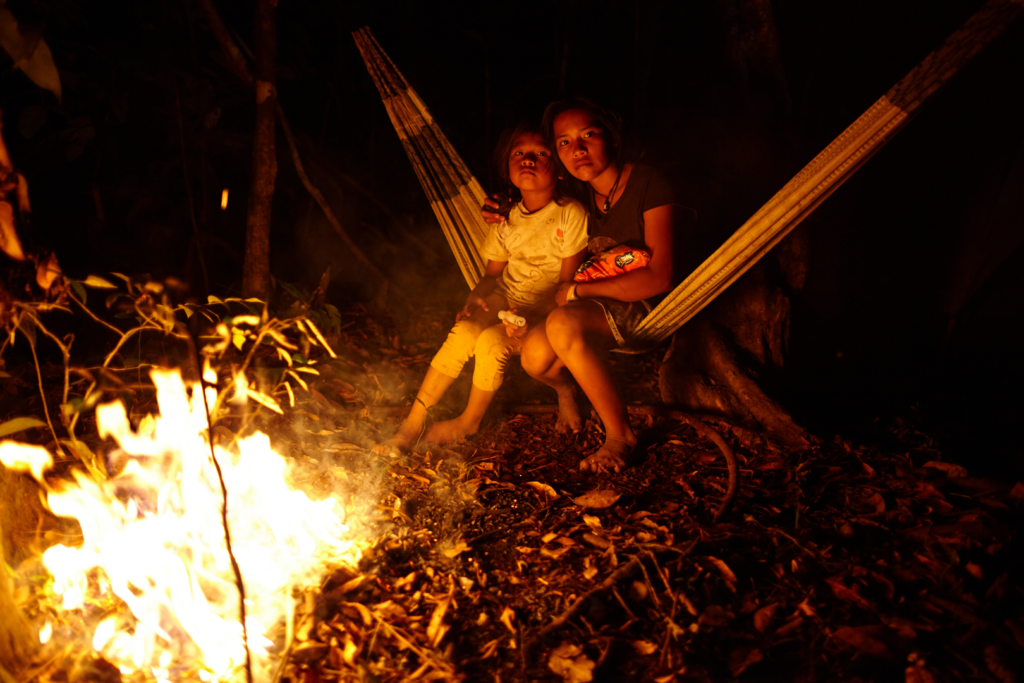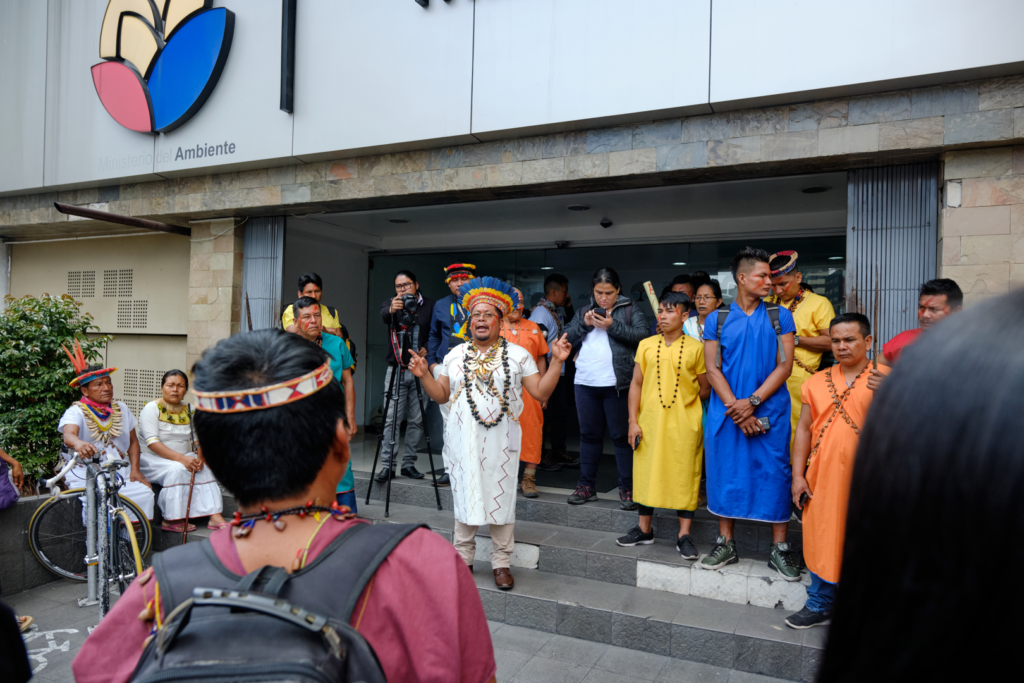The battle to reclaim ancestral Indigenous lands from government hands is gaining momentum across the Upper Amazon, one title at a time. Yet this fight is far more profound than a land property title – it’s about the right to exist and thrive after centuries of conquest, dispossession, and violence. So when the Siekopai Nation won a victory in court last year against the Ecuadorian Government to recover their ancestral heartland after over eighty years of forced displacement, the moment marked an enormous triumph for Indigenous resistance and the struggle of communities across the Amazon working to recover ownership and recognized titles over their lands.
Many months have now passed, and the Siekopai are getting ready to mobilize this week to denounce the Ecuadorian government’s failure to comply with the ruling and deliver a land title. The responsible state institution, Ecuador’s Ministry of the Environment (MAATE) has already exceeded the court-issued deadline by over 200 days. Ahead of the Siekopai’s next mobilization, we break down the 7 reasons that make the Siekopai ruling historic and urgent to uphold:

1) The Siekopai people have finally recovered their homeland
Returning to the sacred territory of Pë’këya, a maze of rivers and deepwater lagoons, has been the dream of Siekopai elders and leaders such as Cesáreo Piaguaje for generations. The verdict is a clear vindication of ancestral leadership, and an indispensable step towards guaranteeing the collective survival and cultural continuity of the Siekopai nation. As the Siekopai nation declared in a public statement: “With joy, we return to Pë’këya; we will go rowing to encounter the water spirits, we will go guided by the spirit of our elders that have died and who accompany us today to return to our origin…The Siekopai, the great nation of multi-colored people comes home.”

2) A new chapter of Siekopai history begins.
With a population of 800 in Ecuador and 1,200 in Peru, the Siekopai are on the brink of cultural and physical extinction. Living on both sides of the border, the Siekopai are currently waging legal battles to recover more than a half-million acres of land that were stolen from their ancestors. The Siekopai’s court victory recognizing Pë’këya marks a major stepping stone in this binational struggle for the reunification of their ancestral territory. As Siekopai leader Justino Piaguaje reflected after the court’s decision, “today we start a new chapter of Siekopai history. We will return to Pë’këya, our life-sustaining centre, to keep feeling and being Siekopai. We have recovered the house, now we need to rebuild it with the vision of our elders.”

3) One of the world’s most biodiverse and climate-critical forests is back in the hands of its original guardians
The verdict returns 104,000 acres of stolen forests to the Siekopai people. This territory – a hypnotic maze of black water lagoons – is the habitat of many endangered species, including the pink river dolphin, the giant otter, the manatee, and the arapaima, the world’s largest freshwater fish. The ethnobotanical and ethnobiological knowledge of the Siekopai nation is regarded as one of the most important in the Americas, and the unique species and environments found in Pë’këya are at the center of this understanding.

4) People power, when mobilized creatively, can challenge the powerful even against the odds
This moment was years in the making, won through deep community organizing, litigation, territorial mapping and international advocacy. Evidence from a wide range of sources assembled over years – from community maps to anthropological research – was presented to the judges to make clear the community’s right to return to their homeland. The legal victory helps us advance the partnership model we’ve been building and adapting at Amazon Frontlines, which shows us that when we come together and build power across borders, we can win big against the odds.

5) There is momentum for land back across the Amazon
The Siekopai victory is a major boost for fights to recover Indigenous land across the region. Ecuador’s national umbrella Indigenous organization CONAIE (Confederation of Indigenous Nationalities) declared that “this verdict establishes a crucial precedent for the struggle of other peoples and Indigenous nations whose ancestral territories were affected by different types of environmental conservation, such as protected areas, imposed unilaterally by the state”. Jorge Acero, human rights defender and lawyer for Amazon Frontlines, sees the court’s decision as one that “opens the door for the defense of all Indigenous territories across the Amazon.” Across the world, from Ecuador to Turtle Island to Palestine – the tide is turning against colonial histories of dispossession.

6) Community struggles can push governments towards reparations
The verdict compels Ecuador’s Ministry of the Environment, Water and the Ecological Transition (MAATE) to publicly issue formal apologies to the Siekopai nation and conduct a “solemn act of redress”, over the state’s violations of communal rights. This act of repair is directled particularly to elders and youth – those grandmothers and grandfathers who have endured the most severe consequences of being dispossessed of their territory and to younger generations who grew up without access to the Siekopai heartland.
“Our nation is very happy because we are recovering the land where our ancestors once drank yagé. By returning there, I feel very happy to drink our medicine and to connect with our ancestors”, says 25-year old Siekopai youth Davixon Lusitande (pictured above). Another Siekopai youth, Milena Piaguaje, reflects on the victory: “Our elders are happy and for me it is a privilege to return to this territory and to learn about plants that I’ve never seen before. I want to return there so that our elders can teach me how to make pottery and how to make our traditional weavings. For us, as youth, to be able to return to Pë’këya with our elders so that we can learn as much from them as possible before they pass away”.

7) The verdict reminds us what climate justice looks like
The court’s recognition of Pë’këya as Siekopai territory arrives at a time when the climate crisis is intensifying around the world. As Big Oil and other corporate polluters line up to falsely present themselves as leaders of “sustainability” and “climate ambition”, Indigenous communities across the Upper Amazon such as the Siekopai are showing what real action to protect Mother Earth looks like. The problem has never been an absence of climate solutions, but rather a willful dispossession of communities who have been protecting forests and ecosystems for millenia.




